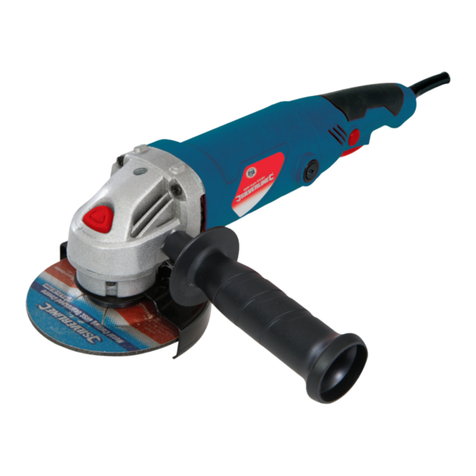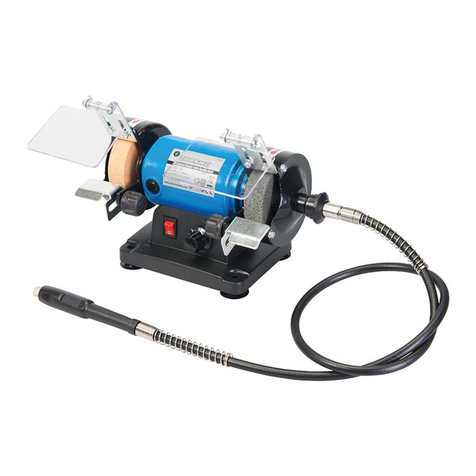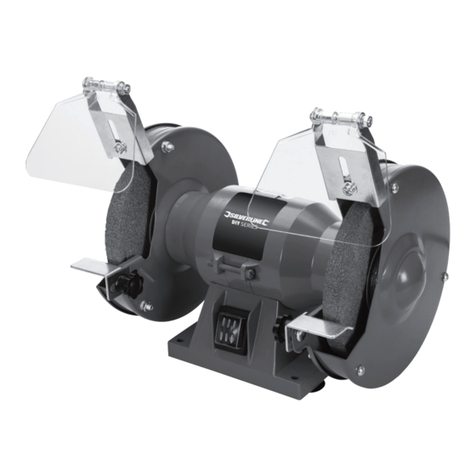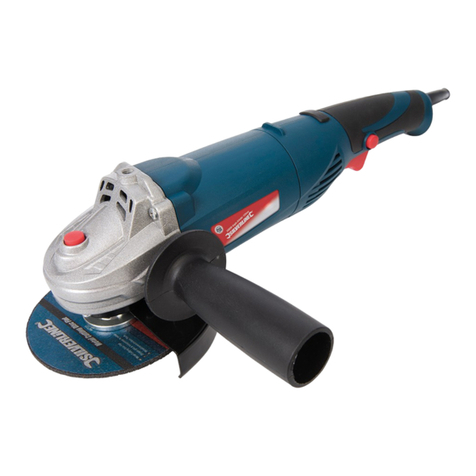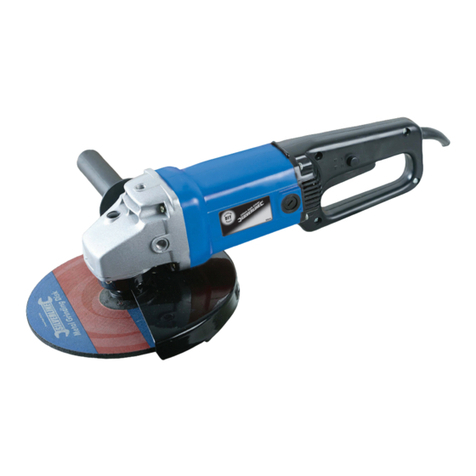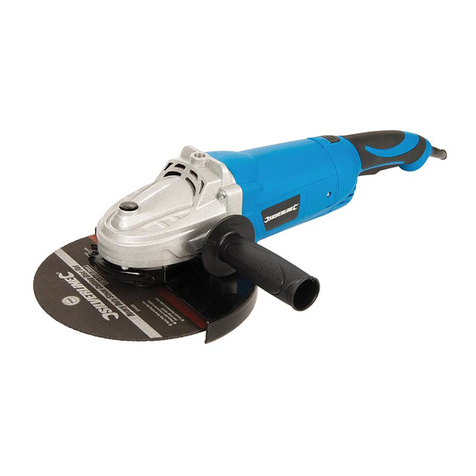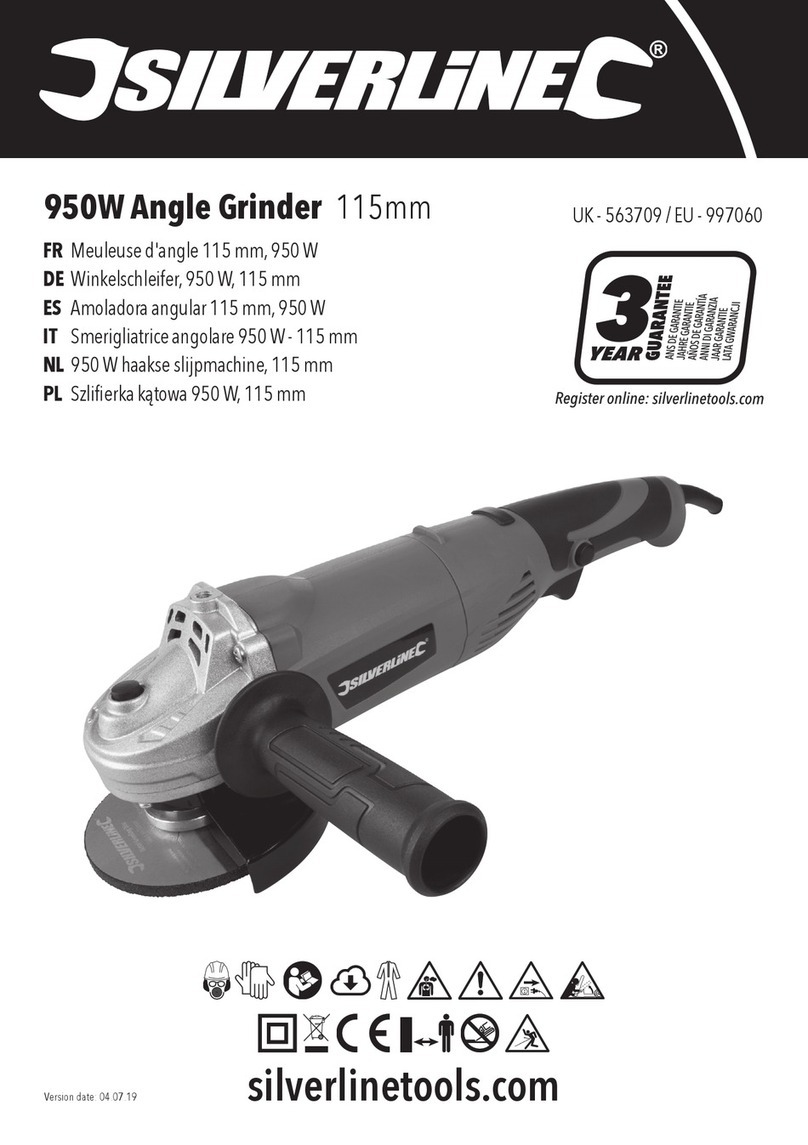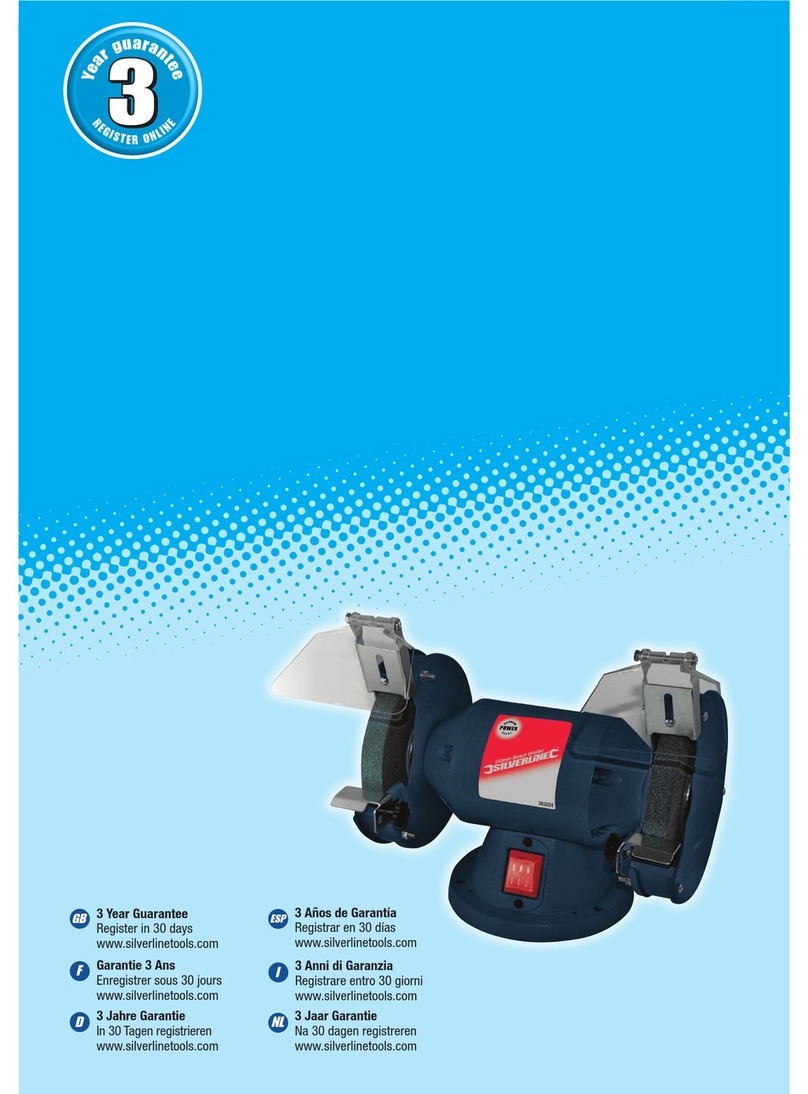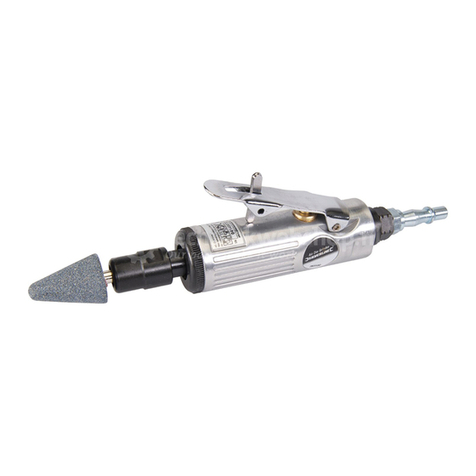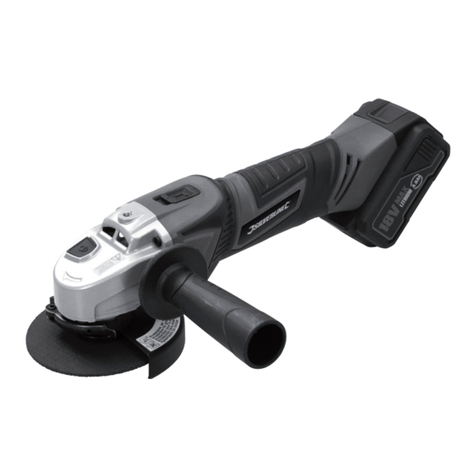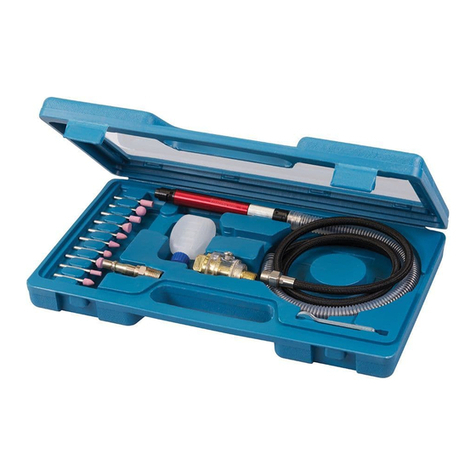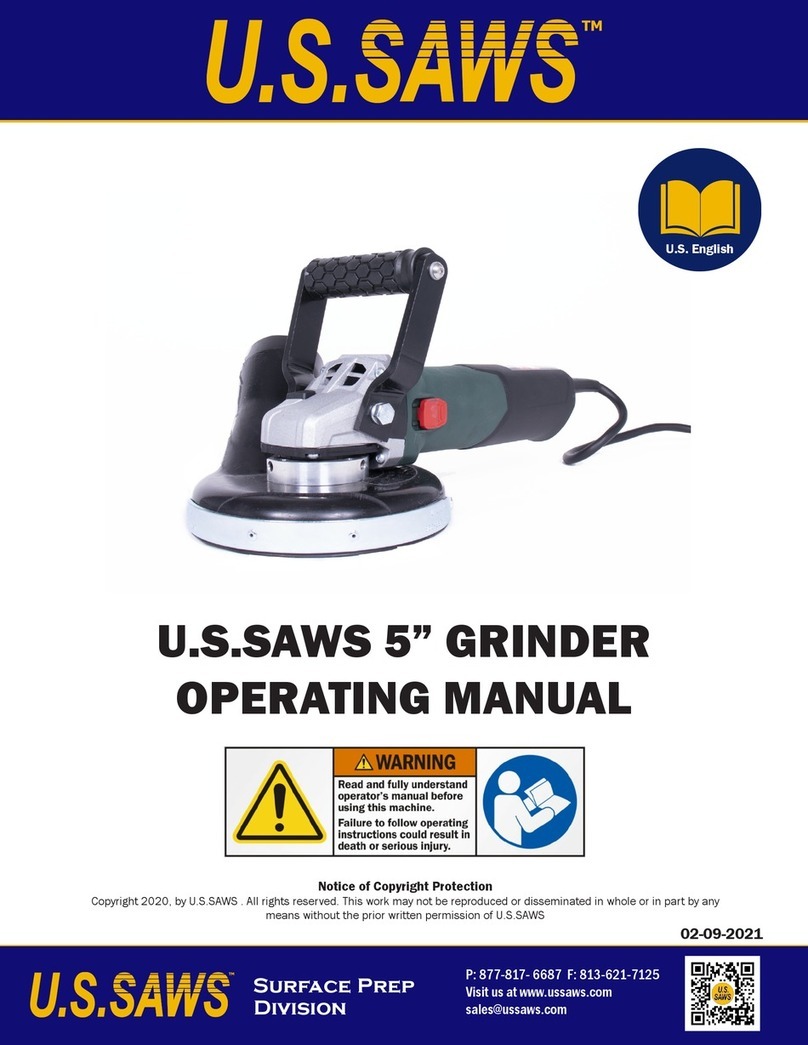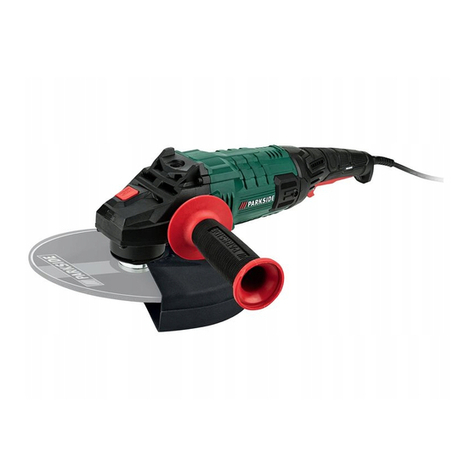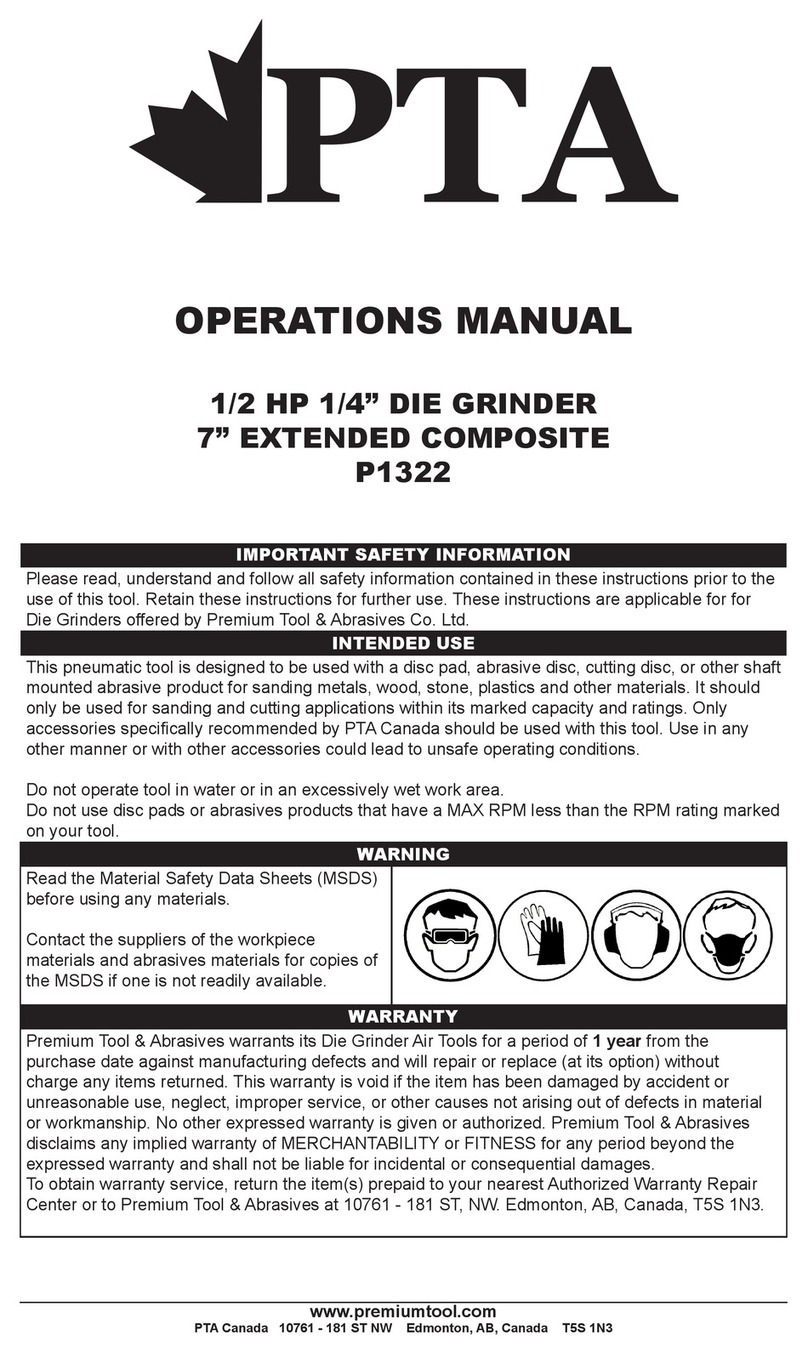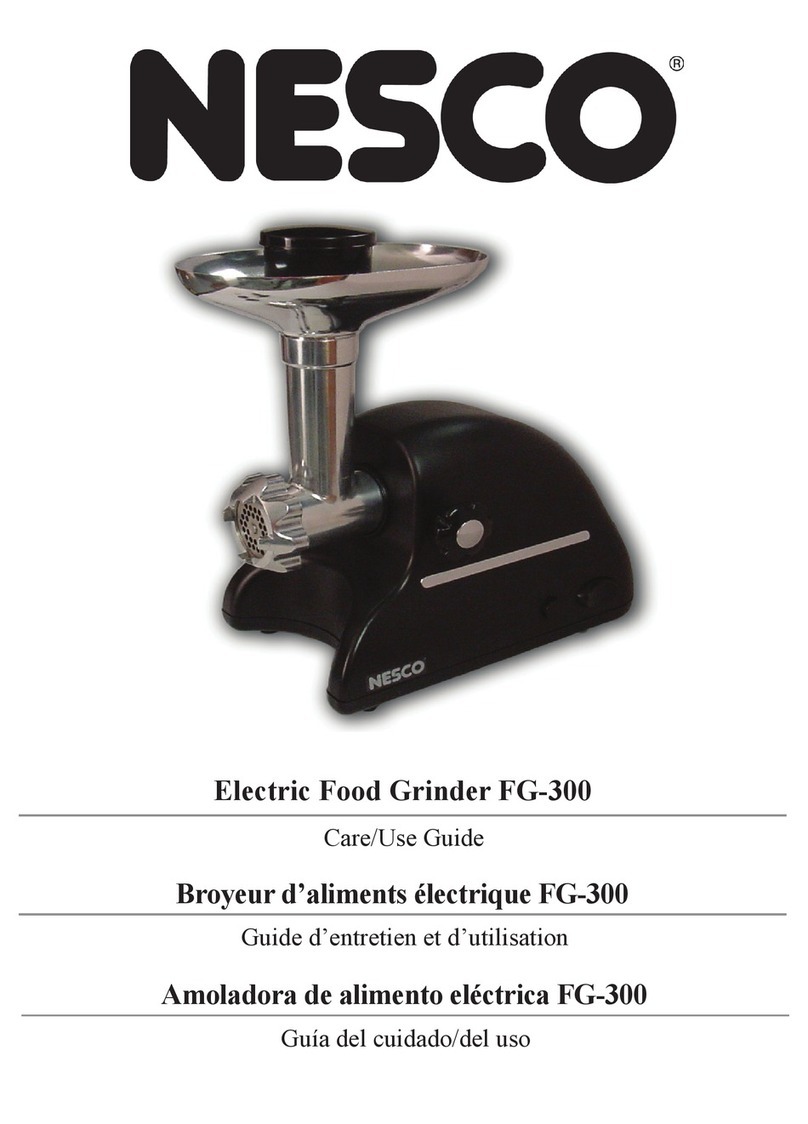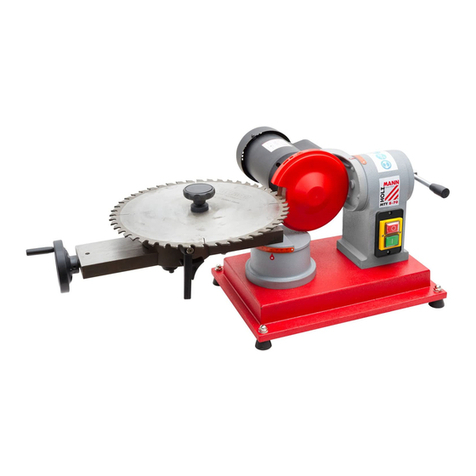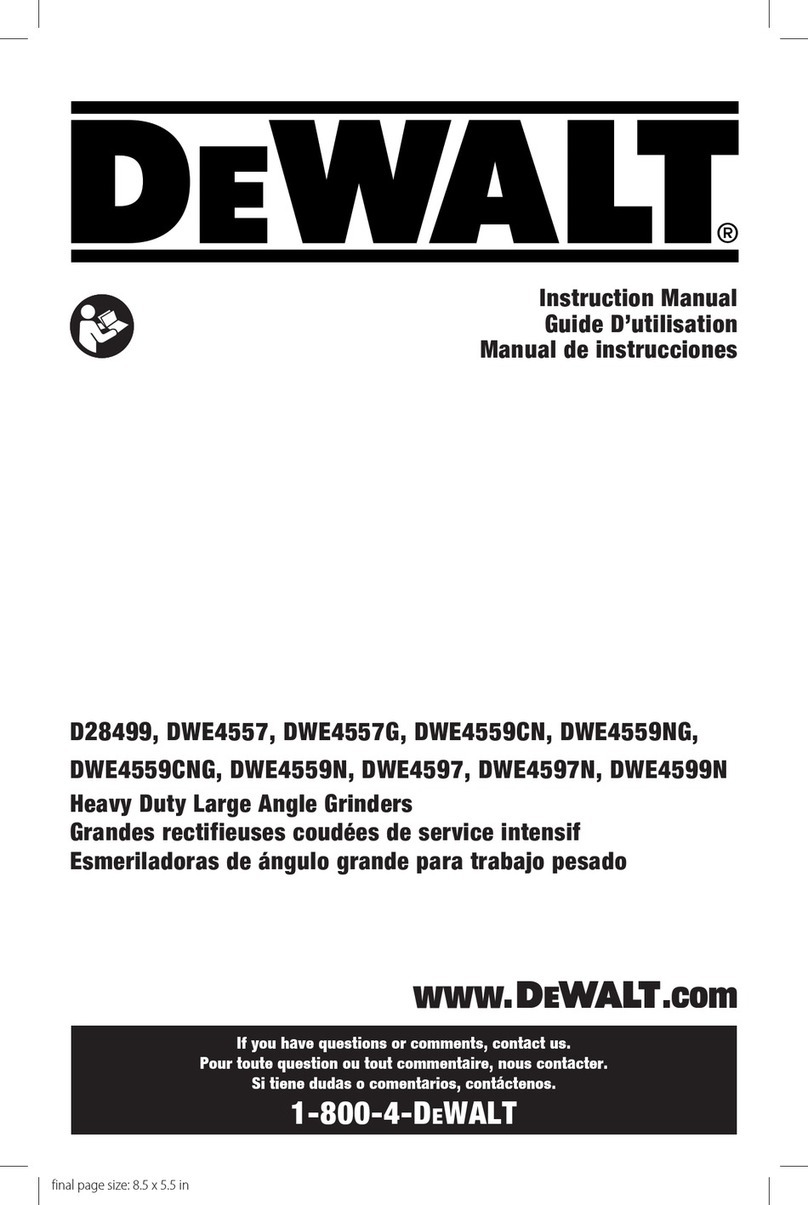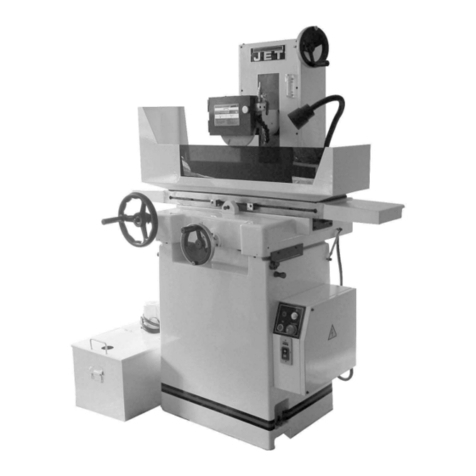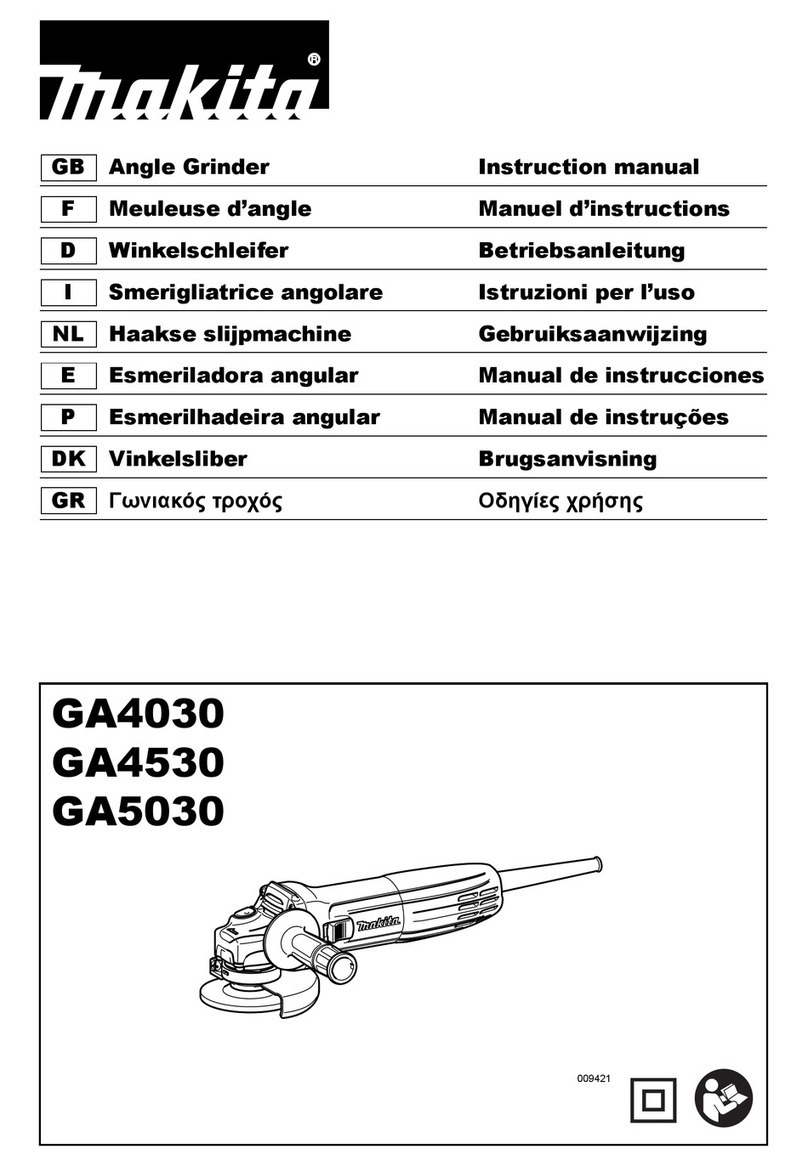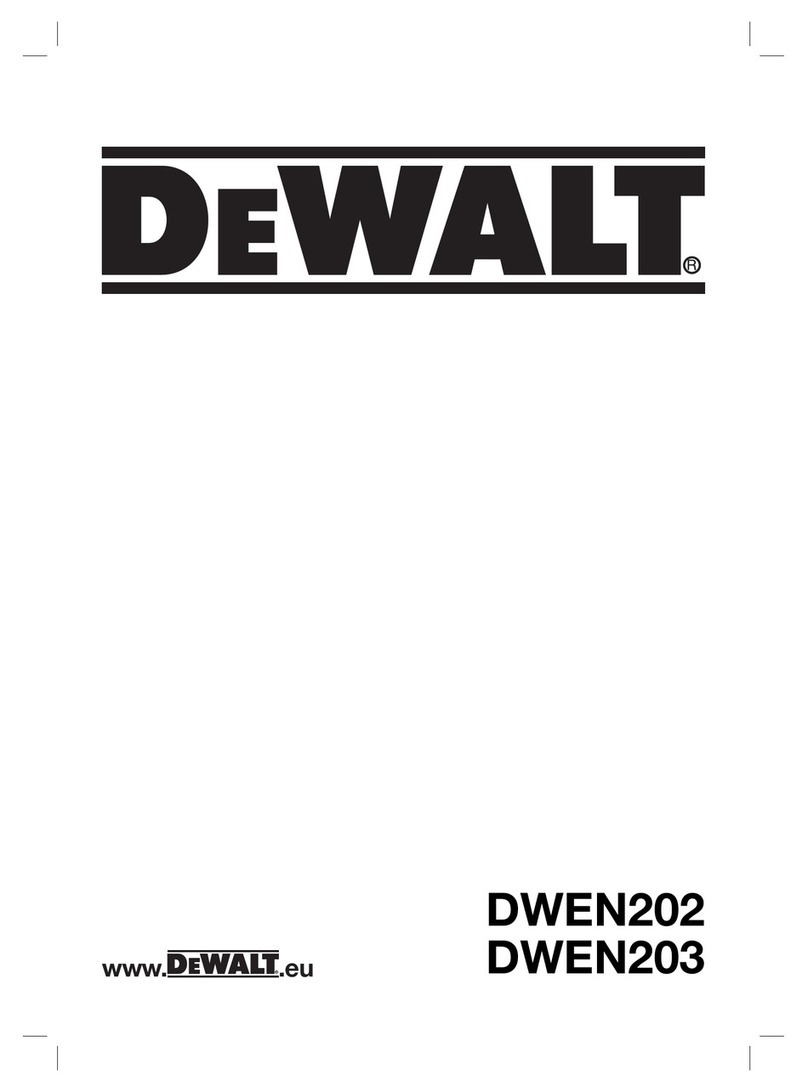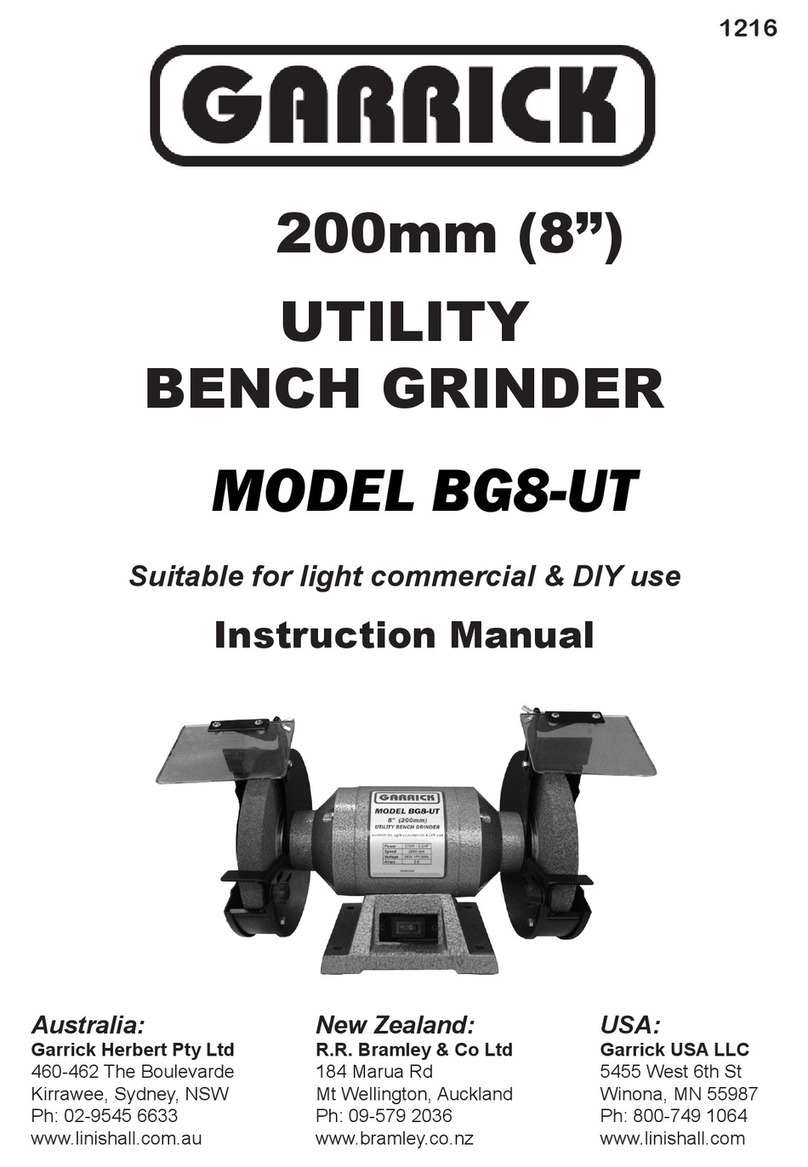
Air Angle Grinder196512
5
silverlinetools.com
Vibration
• TheEuropeanPhysicalAgents(Vibration)Directive2002/44/ECwasintroducedtocontrolthe
exposureofvibrationatwork.TheDirectiveenablesusersoftoolstomakeinformeddecisions
ontheamountoftimespentworking.Thosewhoregularlyoperatehighvibrationequipment
over a sustained period of time are at a higher risk of health problems. ISO 28927-3 measures
vibrationinthreedirectionswhichisknownastri-axialorvectorsummeasurement.When
operating high vibration equipment, ensure not to exceed exposure levels. For more details on
The Vibration Directive 2002/44/EC please visitThe European Agency for Safety and Health at
work-www.osha.europa.eu
General Safety Warnings
• For multiple hazards,read and understand the safety instructions before installing, operating,
repairing,maintaining,changingaccessorieson,orworkingnearthistool.Failuretodosocan
result in serious bodily injury
• Onlyqualiedandtrainedoperatorsshouldinstall,adjust,orusethistool
• Donotmodifythistool.Modicationscanreducetheeffectivenessofsafetymeasuresand
increase the risks to the operator
• Do not discard the safety instructions; give them to the operator
• Do not use this tool if it has been damaged
• Tools shall be inspected periodically to verify that the ratings and markings required by this part
of ISO 11148 are legibly marked on the tool. The employer/user should contact the manufacturer
toobtainreplacementmarkinglabelswhennecessary
WARNING:Thisapplianceisnotintendedforusebypersons(includingchildren)withreduced,
physicalormentalcapabilitiesorlackofexperienceorknowledgeunlesstheyhavebeengiven
supervision or instruction concerning use of the appliance by a person responsible for their safety.
Childrenmustbesupervisedtoensurethattheydonotplaywiththeappliance.
Projectile hazards
• Beawarethatfailureoftheworkpieceoraccessories,orevenoftheinsertedtoolitself,can
generate high-velocity projectiles
• Alwayswearimpact-resistanteyeprotectionduringoperationofthistool.Thegradeofprotection
required should be assessed for each use
• Foroverheadwork,wearasafetyhelmet
• The risks to others should also be assessed at this time
• Ensurethattheworkpieceissecurelyxed
Entanglement hazards
• Choking,scalpingand/orlacerationscanoccuriflooseclothing,personaljewellery,neckwear,
hairorglovesarenotkeptawayfromthetoolanditsaccessories
Operating hazards
• Use of the tool can expose the operator’s hands to hazards, including cuts,abrasions and heat
• Wear suitable gloves to protect hands
• Operatorsandmaintenancepersonnelshouldbephysicallyabletohandlethebulk,weightand
powerofthetool
• Hold the tool correctly; be ready to counteract normal or sudden movements and have both
hands available
• Maintain a balanced body position and secure footing
• Release the start-and-stop device in the case of an interruption of the energy supply
• Use only lubricants recommended by the manufacturer
• Personal protective safety glasses should be used; suitable gloves and protective clothing are
recommended
• Inspect the cutting disc before each use.Do not use if cracked or broken or if it has been dropped
• Avoiddirectcontactwithmovingpartsinordertopreventpinchingorcuttingofhandsorother
body parts.
• Wear suitable gloves to protect hands
• Neverswitchthetoolonoroffwhilstthediscisincontactwiththeworkpiece
• There is a risk of electrostatic discharge if used on plastic and other non-conductive materials
• Potentially explosive atmospheres can be caused by dust and fumes resulting from cutting or
grinding
• Alwaysusedustextractionorsuppressionsystemswhicharesuitableforthematerialbeing
processed
Repetitive motions hazards
• Whenusingthistooltoperformwork-relatedactivities,theoperatorcanexperiencediscomfortin
the hands, arms,shoulders, neck or other parts of the body
• Whileusingthistool,theoperatorshouldadoptacomfortableposturewhilstmaintainingsecure
footingandavoidingawkwardoroff-balancepostures.Theoperatorshouldchangeposture
during extended tasks; this can help avoid discomfort and fatigue
• If the operator experiences symptoms such as persistent or recurring discomfort, pain,throbbing,
aching,tingling,numbness,burningsensationsorstiffness,thesewarningsignsshouldnotbe
ignored.Theoperatorshouldinformtheemployerandconsultaqualiedhealthprofessional
Accessory hazards
• Disconnectthetoolfromtheenergysupplybeforettingorchangingtheinsertedtoolor
accessory
• Avoiddirectcontactwiththeinsertedtoolduringandafteruse,asitcanbehotorsharp
• Use only sizes and types of accessories and consumables that are recommended by the
manufacturer of this tool; do not use other types or sizes of accessories or consumables
• Check that the maximum operating speed of the cutting disc is higher than the rated speed
of the tool
Workplace hazards
• Slips,tripsandfallsaremajorcausesofworkplaceinjury.Beawareofslipperysurfacescausedby
use of the tool and also of trip hazards caused by the air line or hydraulic hose
• This tool is not intended for use in potentially explosive atmospheres and is not insulated against
contactwithelectricpower
• Ensurethattherearenoelectricalcables,gaspipes,etc.,whichcancauseahazardifdamaged
by use of the tool
Dust and fume hazards
• Dustandfumesgeneratedwhenusingthistoolcancauseillhealth(forexamplecancer,birth
defects, asthma and/or dermatitis); risk assessment and implementation of appropriate controls
for these hazards are essential
• Risk assessment should include dust created by the use of the tool and the potential for
disturbing existing dust
• Operate and maintain this tool as recommended in these instructions, to minimise dust or
fume emissions
• Directtheexhaustsoastominimisedisturbanceofdustinadust-lledenvironment
• Where dust or fumes are created,the priority should be to control them at the point of emission
• All integral features or accessories for the collection,extraction or suppression of airborne
dustorfumesshouldbecorrectlyusedandmaintainedinaccordancewiththemanufacturer’s
instructions
• Select, maintain and replace the consumable/inserted tool as recommended in the instruction
handbook, to prevent an unnecessary increase in dust or fumes
• Userespiratoryprotectioninaccordancewithemployer'sinstructionsandasrequiredby
occupational health and safety regulations
Noise hazards
• Exposure to high noise levels can cause permanent, disabling hearing loss and other problems,
suchastinnitus(ringing,buzzing,whistlingorhummingintheears).Therefore,riskassessment
and implementation of appropriate controls for these hazards are essential
• Appropriate controls to reduce the risk can include actions such as damping materials to prevent
workpiecesfrom‘ringing’
• Usehearingprotectioninaccordancewithemployer'sinstructionsandasrequiredby
occupational health and safety regulations
• Operate and maintain this tool as recommended in the instruction handbook, to prevent an
unnecessary increase in the noise level
• Select, maintain and replace the consumable/inserted tool as recommended in the instruction
handbook, to prevent an unnecessary increase in noise
• Ifthetoolhasasilencer,alwaysensureitisinplaceandingoodworkingorderwhenthetool
is being operated
Vibration hazards
Thisinformationshalldrawattentiontovibrationhazardsthathavenotbeeneliminatedbydesign
and construction and remain as residual vibration risks.It shall enable employers to identify the
circumstancesinwhichtheoperatorislikelytobeatriskfromvibrationexposureIfthevibration-
emission value obtained using ISO 28927-3 does not adequately represent the vibration emission
in the intended uses (and foreseeable misuses) of the machine, additional information and/or
warningsshallbesuppliedtoenabletherisksarisingfromvibrationtobeassessedandmanaged.
• Exposure to vibration can cause disabling damage to the nerves and blood supply of the hands
and arms
• Wearwarmclothingwhenworkingincoldconditionsandkeepyourhandswarmanddry
• Ifyouexperiencenumbness,tingling,painorwhiteningoftheskininyourngersorhands,stop
using the sander or polisher,inform your employer and consult a physician
• Operate and maintain the sander or polisher as recommended in the instruction handbook, to
prevent an unnecessary increase in vibration levels
• Holdthetoolwithalightbutsafegrip,takingaccountoftherequiredhandreactionforces,
becausetheriskfromvibrationisgenerallygreaterwhenthegripforceishigher
196512_Manual.indd 5 30/08/2017 17:20

